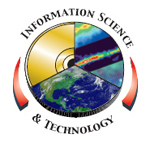Exploranation – from the inside of mummies to planets, stars and galaxies
This talk will take its starting point in the on-going convergence of exploratory and explanatory visualization paradigms into “Exploranation”. Based on the general availability of processing power, access to data and ever improving visualization methods, explanatory visualization can be data driven and fully interactive. This leads to a paradigm shift in visual learning and communication, enabling a new generation of installations and demonstrations at public venues such as museums and science centers. At the same time, explanatory methods can pave the path for new approaches to exploration and workflows for domain experts, and also improve internal team communication.
The talk will address the underlying technical aspects, and use many examples and interactive demonstrations to illustrate the introduced concepts. As a first example, direct volumetric rendering of data from scanning modalities will show human anatomy and function, and how specimens from collections at museums, such as mummies, insects and flowers, can be virtually dissected. The talk will then focus on large scale immersive visualization on dome theaters and discuss interaction in these environments. The talk will also include a presentation and live demonstration of how the exploranation concept can be applied to space research and science communication in space and astronomy using the OpenSpace software, which is a scalable platform that paves the path for the next generation of public outreach in immersive environments such as dome theaters and planetariums. We will demonstrate features such as: globe browsing which enables contextualization of extreme resolution imagery of planetary surfaces, interactive visualization of large star fields e.g. 1 billion stars from the Gaia DR2 data release, and volumetric rendering of MHD simulations of coronal mass ejections and operational space weather forecasting. The OpenSpace project builds on a collaboration between Linköping University, The American Museum of Natural History, NASA Goddard Space Flight Center, New York University, University of Utah.
Date/Time
Wednesday, April 21, 2021, 11am-12pm EST
This seminar can be viewed remotely via Microsoft Teams: Join here
IS&T Colloquium Committee Host: Helen-Nicole Kostis
Dr. Anders Ynnerman
Chair of Scientific Visualization at Linköping University, Sweden. Director of the Norrköping Visualization Center.
Professor Anders Ynnerman received a Ph.D. in physics from Gothenburg University, Sweden. During the early 90s, he was at Oxford University, UK, and Vanderbilt University, USA. Since 1999, he holds the chair in scientific visualization at Linköping University and is the director of the Norrköping Visualization Center C. Ynnerman is a member of the Swedish Royal Academy of Engineering Sciences and the Royal Swedish Academy of Sciences. In 2007 Ynnerman was awarded the Akzo Nobel Science award and in 2010 he received the Swedish Knowledge Award for dissemination of scientific knowledge to the public. In 2017 he was honored with the King’s medal for his contributions to science and in 2018 he received the IEEE VGTC technical achievement award.
Dr. Alexander Bock
Lecturer at Linköping University, Sweden. Development Lead on the open-source Astrovisualization software OpenSpace.
Dr. Alexander Bock is currently a lecturer at Linköping University, Sweden. Prior to this, he has been a research fellow at the University of Utah and a Moore-Sloan Data Science Fellow with the Center for Data Science at New York University. He received his PhD in Visualization and Interaction from Linköping University, Sweden. In 2015, he was a visiting Research Scholar with the Community Coordinated Modeling Center at the Goddard Space Flight Center. He is also the Development Lead on the open-source Astrovisualization software OpenSpace, developed in collaboration between Linköping University, the American Museum of Natural History, NASA, the University of Utah, and New York University. Bock was awarded 2014 and 2015 with the Best Scientific Visualization poster and 2017 with the Best Scientific Visualization paper awards at the IEEE Visualization conference for his work in the field of Astrovisualization.


